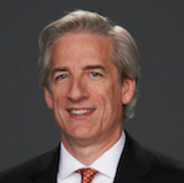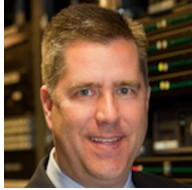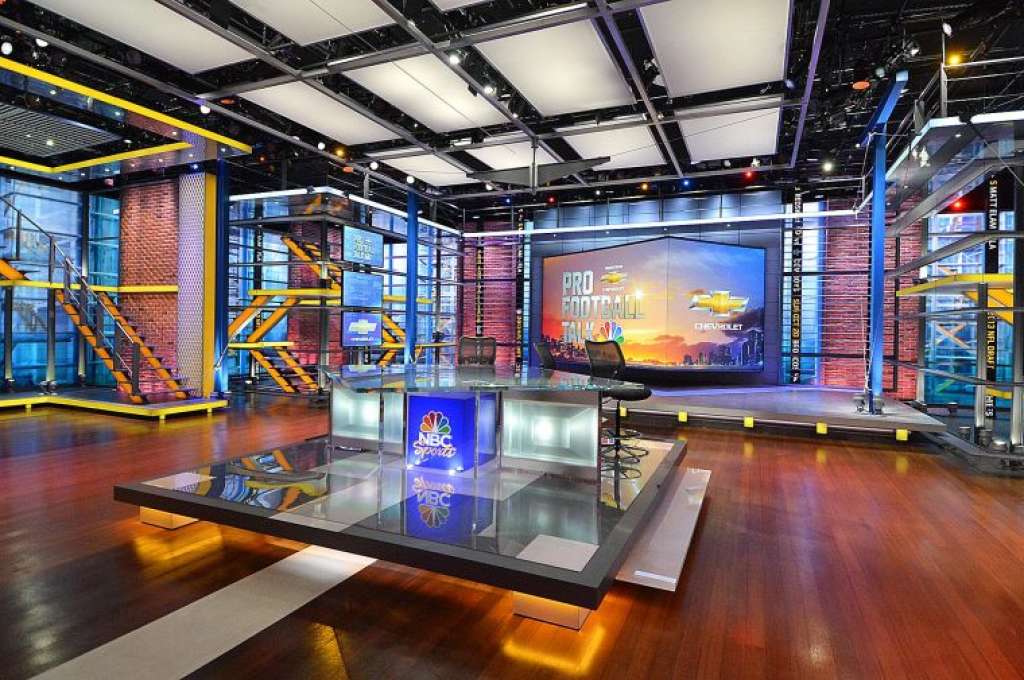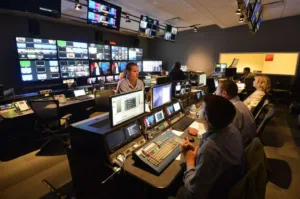Sports Video Group (SVG) hosted a seminar on “Going Live with IP Workflows” at the NBC Sports Studios in Stamford, Connecticut. The idea was discuss how IP is being used today in live sports production and how this may change in the future.
To start this discussion, David Mazza, NBC Sports Group and NBC Olympics SVP and CTO (photo left), along with Tim Canary, NBC Sports Group VP, Engineering (photo right), described the process they went through to design and build the Stamford facility, which was built in an old shampoo factory operated by Clairol. They explained that the feasibility study began in June 2011 and 15 months later, they were doing live production in the $100M, 300K square feet facility (9,300m²). Now, the facility houses 800 people in the the NBC Sports group.


In a TV production facility, a massive router lies at the hub of all connectivity. It is used to connect various incoming signals from live cameras, disc drives, tape and external sources to editing bays, control rooms, live switchers, monitors and more. Routing has historically been done with a massive SDI-based router and indeed the NBC Olympics Group, which was the first to occupy the Stamford facility, initially selected one from Evertz. But as the mission of the facility grew as all of the local sports personnel were moved to the facility, it became clear that additional central routing capacity was needed. In September 2013, the team decided to evaluate expanding using IP routing. After all, SMPTE had issued standard ST-2022-6 that allowed for IP encapsulation of an SD signal so this should have been able to serve as the basis for a solid IP routing strategy.
It also became clear that it was not possible to have the full facility moving signals in the IP domain – only the central router would use IP. Ingest of signals, playout at monitors and multi-viewers as well as the switching and editing functions, all needed to remain in the baseband SDI domain. Why? Because most of this equipment could not directly support an IP encapsulated signal and they did not want to buy new equipment that could. Plus, few accessories actually directly support this input anyway. As a result, there are a lot of cards to convert SDI signal to encapsulated IP signals and vice versa all placed near the ingest, output and switching/editing platforms.

Another change that was quickly adopted was the ability to separately route audio signals from video signals. ST-2022 is a protocol for video with embedded audio, which may be fine for plant-to-plant transport, but not for within the plant, managers decided. The solution was a system called Aspen. IP routing of separate audio and video streams is now codified in SMPTE ST-2110.
One of the technical lessons learned along the way was the need to have an ability to control the delay from various sources to allow them to be switched in synchrony for live production. They also had to be convinced that a redundant router was absolutely necessary. This allowed for repairs and maintenance to be made on one while the other keeps the facility operational. But more importantly, they found that any on-air frame can come from the primary or redundant router as they work together to provide the best frame at any given time.
Operationally, the team learned that planning is very critical and education of the staff is absolutely necessary. Going from an SDI BNC world to an IP world is very different, so training in the networking basics was part of the education process.
At the event, NBC Sports Group President, NBC Olympics and Business, Gary Zenkel, also announced that this July, it will roll out a new linear channel devoted to Olympics coverage. This will include a linear cable channel that should become available to tens of millions of households this summer, along with a companion web/app streaming service with content on other NBC channels like NBCSN. Content will come from various partners worldwide, the U.S. and International Olympics Committees and archive and new original content from NBC Sports. Coverage will focus on events but also in storytelling about the athletes’ journeys.
Zenkel also noted that the facility has now got very good at creating remote productions meaning they can accept multiple live feeds from sporting events and do all the on-air switching and control from this facility. – CC

